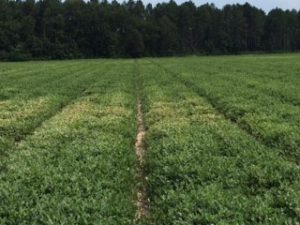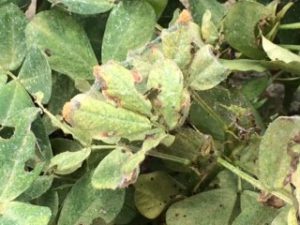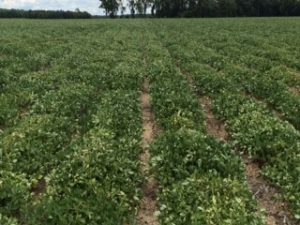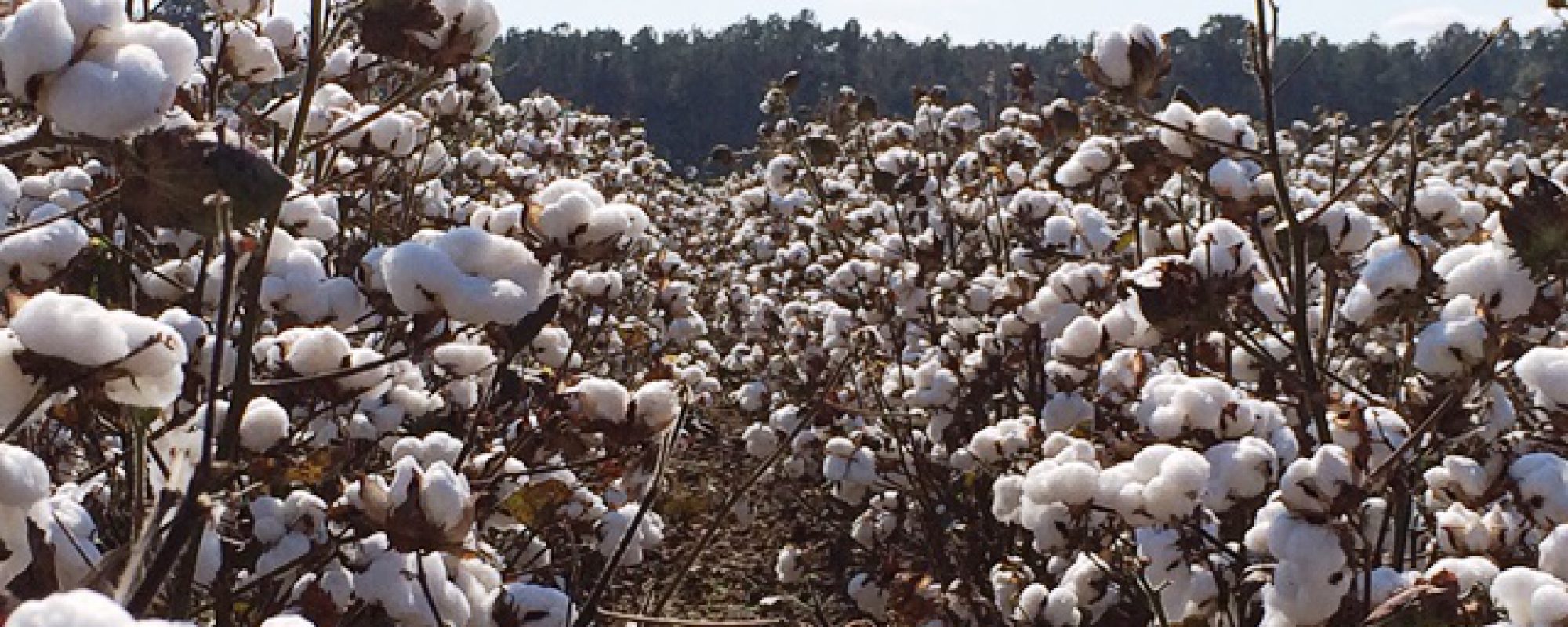The continued hot and dry weather is not ideal for many things, but spider mites love it. I continue to find additional spider mite infestations in more and more of the dryland peanut fields that I visit. The dry corners in pivot fields are also harboring mites. The extended hot and dry weather is allowing the spider mite numbers to increase at an alarming rate.
Please be diligent and do not overlook these fields that seem to be severely drought stressed – many of these fields are also infested with spider mites. Please observe the pictures below that I have taken over the past few days to view how infested fields may look.


Applications of broad spectrum insecticides like pyrethroids and organophosphates can flare mite populations and make a bad situation much worse. Spider mite populations can quickly explode and waiting a week or so to see what is going to happen with mites can be a mistake. Be sure to use water volumes of 20 gallons or more per acre and high spray pressure when treating peanut fields for spider mites. Comite is still the only true miticide registered for use in peanut. Comite does not have good activity on mite eggs, so two applications are often needed to get infestations under control especially if large numbers of eggs are present when the first treatment is made.

Rainfall can reduce spider mite numbers, but mites are not going to disappear after one or two thunderstorms. Use caution when spraying your routine fungicides or other chemicals in peanut fields as mites can be transferred very easily from field to field on equipment.
